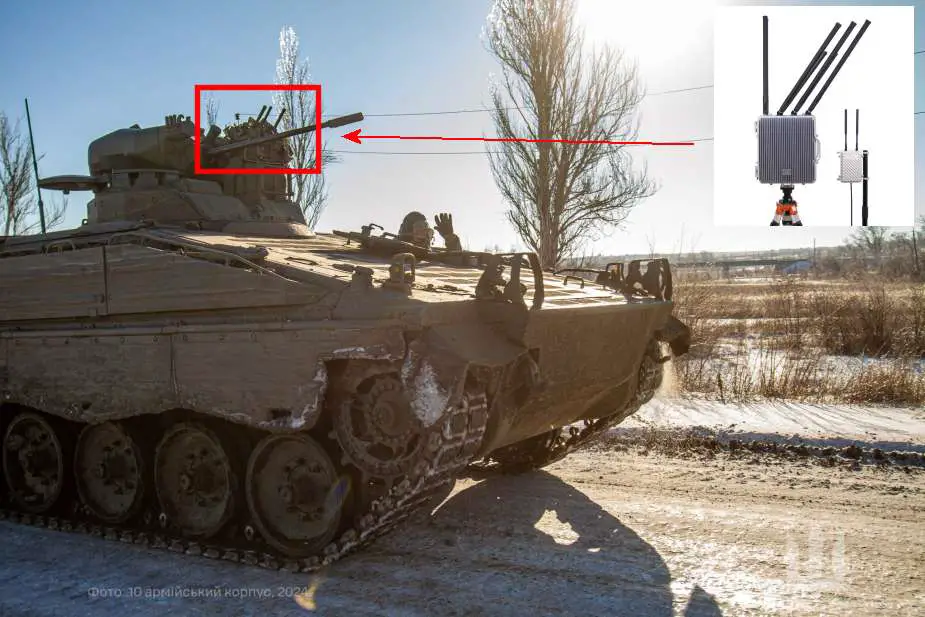According to a picture published on a social network on January 10, 2023, the Ukrainian 10th Army Corps has recently outfitted its German-made Marder 1A3 Infantry Fighting Vehicles (IFVs) with the 'Sania' system, designed to counter First Person View (FPV) drones. This deployment is in response to the escalating use of FPV drones in warfare, particularly in the ongoing conflict in Ukraine.
Follow Army Recognition on Google News at this link

Marder 1A3 Infantry Fighting Vehicle of Ukrainian army equipped with counter drone system Sania. (Picture source Social Network)
FPV (First Person View) drones have become a significant factor in the ongoing conflict between Russia and Ukraine. These drones are highly customizable, allowing for the assembly of aircraft tailored to specific needs, including the selection of engines, frames, batteries, and combat payloads. The advantages of FPV drones include high speed, maneuverability, and sniper-like precision, with some even capable of performing kamikaze attacks on targets like tanks. They are operated manually and are not linked to GPS satellite navigation, making them less susceptible to electronic warfare measures, although they can still be disrupted by enemy jamming attacks.
One of the primary benefits of FPV drones is their cost-effectiveness. Prices can range from $500-600 to $1,000, with production based on racing quadcopters starting at around $200 per unit. Despite their low cost, these drones can destroy military machinery that is hundreds or thousands of times more expensive. However, there are limitations, such as the need for lightweight structures, limited battery life, and a restricted destructive payload capacity, typically around 1 kg. This makes incapacitating heavy armored vehicles challenging.
The "Sania" system, now integrated with the Marder 1A3 IFVs, offers a dual approach to drone defense: detection and suppression. The system's detector scans for the presence of FPV drones—either individual units or swarms—within a 1.5-kilometer radius. Upon detection, the suppressor component activates, capable of jamming drone signals up to 1 kilometer away.
What makes this setup particularly effective is the continuous operational capability of "Sania," combined with the mobility and robustness of the Marder 1A3 IFV. The jammer only turns on when a drone threat is identified, preserving energy and reducing the vehicle's electronic signature, which is crucial in combat situations.
Furthermore, the integration of "Sania" on the Marder 1A3 IFV enhances the mobility of this anti-drone solution. The Marder 1A3, known for its armored protection and battlefield versatility, can now move across various terrains while continuously providing a protective anti-drone umbrella for the unit it accompanies. This mobility is essential in countering FPV drones, which are often used for reconnaissance and targeting in fluid combat environments.
The combination of "Sania's" advanced electronic warfare capabilities with the Marder 1A3's proven combat performance marks a significant advancement in the Ukrainian Armed Forces' ability to counter the growing threat of FPV drones in modern warfare. This integrated approach not only boosts the defensive posture of Ukrainian military units but also highlights the innovative strategies being employed in the ever-evolving landscape of 21st-century combat.
According to information published by the German Ministry of Defense, Ukraine's army has already received from Germany a total of 90 Marder 1A3, tracked armored infantry fighting vehicles.
News Russia Ukraine War
















